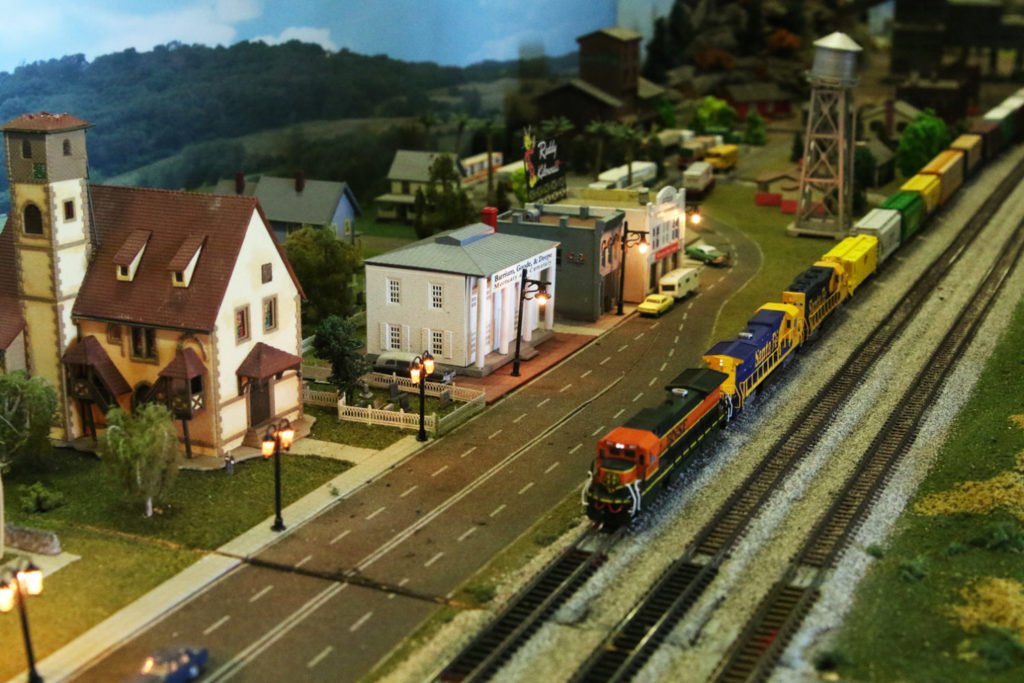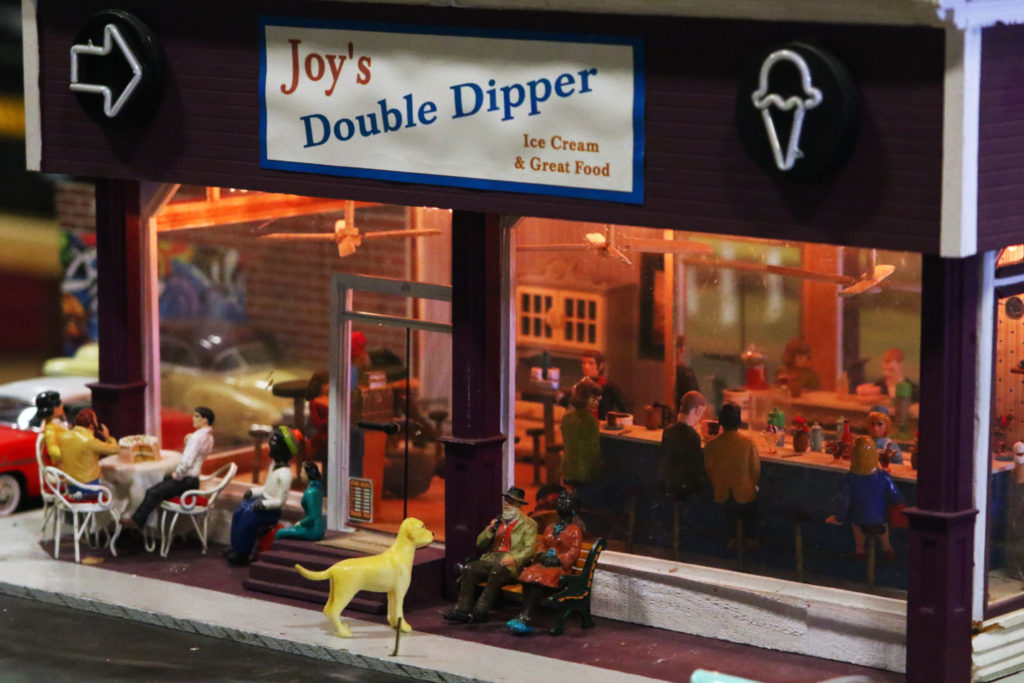In the early 19th century, not too long after the invention of steam-powered locomotives, the German toy company Märklin began manufacturing model trains. Practically since their inception, model railroads have occupied a special place in many a hobbyist’s heart and have been at the center of family traditions. For example, when this writer was a child, back in the 1970s, my father used to set up his Lionel train to run circles around my grandparents’ Christmas tree. And while what remains of that particular train set now resides in a cardboard box in a garage in Palatine, Illinois, the memories of seeing that engine car’s headlight and smoke and hearing its whistle still resonate very powerfully. Thus, when I learned that The Great Train Show was coming to OC Fair & Event Center February 8 and 9, I wanted to take advantage of the opportunity to learn from the model train community just how far the traditions, technology and artistry of the model train have come.
The train show occupied two of the hangars and the space between them, and it was packed. While there were a number of facets to the event, including seminars, educational opportunities and children’s activities, the principal aspects were the plentiful vendors — who sold everything from new and vintage parts to books on model trains to art supplies — and the mind-blowing displays. Collectively, the displays, the detailed components and the various chemical building materials that were for sale provided a glimpse at just how deeply the model train community cares about its art and technology.

The Great Train Show (Scott Feinblatt)
Before I spoke with Kurt Jablonski, the show’s manager, I explored a bit on my own to take in the depth of detail and variety on display throughout the event. I was no stranger to the basics about model train building, as I’ve known many people who have sculpted, cast and molded their own miniature mountains, created their own miniature trees, and designed appropriately scaled vignettes along railway pathways; however, I was not prepared for what I saw here.
There were around 20 impressive model train set displays of varying scale, complexity, and expansiveness throughout the show. These, I learned, had been set up by model train clubs, both big and small, as well as individuals. Among the displays, there were freight and commuter trains, trains with realistic graffiti on them, illuminated billboards, cell phone towers, construction workers with flashing welding torches, a military airstrip, an enormous shipyard (complete with loading cranes), oil refineries, farmland scenes (complete with vegetable crops, a cornfield with scarecrow and a cow grazing scene), medieval scenes with castles, mounted knights and a dragon, wedding scenes, desert mesas, lumberyards, and even an animated, underground coal mine with realistic miniature lights, a working elevator and a soundtrack that included an appropriately timbred fire boss’s voice bellowing safety instructions before the sound of an explosion.

The Great Train Show (Scott Feinblatt)
After becoming lost in the detail of hundreds of impressive diminutive model train components, I wandered into the office of Mr. Jablonski for a chat. First, he confirmed that the Christmas tree tradition is alive and well, and it is one that many people continue; he, himself, shares the tradition with his 10-year-old daughter. Next, he provided insight on the number of scales that model trains come in. He said, “There’s HO, N, O, standard gauge, Z scale, G scale,” and while many people are especially fond of their preferred scale for building, Jablonski added that there wasn’t really a competitive spirit between the builders — they’re just in it for love of the art. Regarding preference for brands, he said that there were plenty of players in the game besides Lionel. He named several: “Bachman, Walthers, Athearn, Scale Trains, MTH, Kato, Lionel, Piko, Märklin, you know, those are just a few of the companies, and they all make very, very high quality trains. Some of those are on the more affordable end, and some of those are in the very high end.”
Given that the technology of model trains was very simple when I was a child, I inquired the extent to which it remained that way. Evidently, as Jablonski pointed out, they’ve been keeping pace with modern technology, which has also made them start to appeal more to today’s youth. “Nowadays, you can get cars that can be run with Bluetooth chips, using an iPad … there’s digital sound decoders and speakers built into the trains so that you can add some realistic backing up noises, and things like that,” he said, “I hope it catches on more than it [has] because I think it has a better chance of keeping the younger generations, [who] can relate to a tablet better than they can [to] a hammer switch or a throttle switch.”

The Great Train Show (Scott Feinblatt)
While the weekend attendance numbers for the SoCal shows produced by Great Train Show range from 6,000 to 10,000, as Jablonski said, they put on shows all over the U.S., and some of them can exceed 30,000 people. He added that SoCal has a unique credit. “Southern California probably has the largest contingent of outdoor railroads, you know, garden railroads and things like that,” he said. “We see more people selling a garden railroad scale — G scale — here than in any other show that we run.” He also added that beyond the U.S., model trains are still very popular in their country of origin, Germany, as well as in England and in Japan.
In consideration of how deeply committed the various show attendees are to model trains, Jablonski pointed out, “Part of the appeal is that you can get into it as much as you want. I mean, in model railroading, there’s the simple operation of putting train on track and pulling a few cars; there’s a lot of artistry in it [for others]. There’s a community planning, if you want to call it that; you know, placing buildings, molding your mountains and adding hills, depth of scenery, grass, trees, and things like that.”
The Great Train Show produces numerous events throughout the year, and, as Jablonski revealed, they will be back in the summertime with a show in Pomona. So, whether you’d be interested in checking out some of the remarkable modeling work, buying your own set and/or scenery-building materials, or applying to display your own work, the Great Train Show won’t have us waiting long before the next time it pulls into town.
For more information about the Great Train Show and their upcoming events, visit their website: greattrainshow.com.
Advertising disclosure: We may receive compensation for some of the links in our stories. Thank you for supporting Irvine Weekly and our advertisers.

